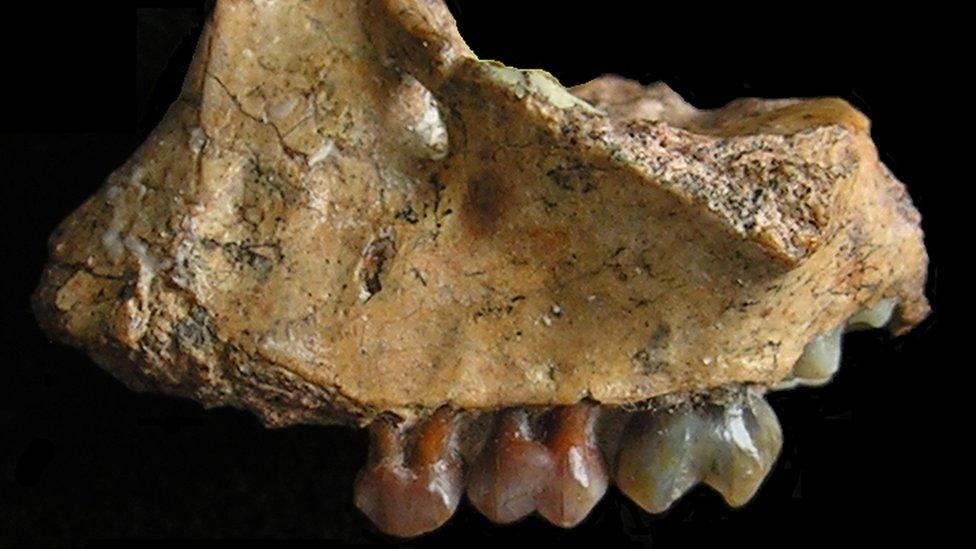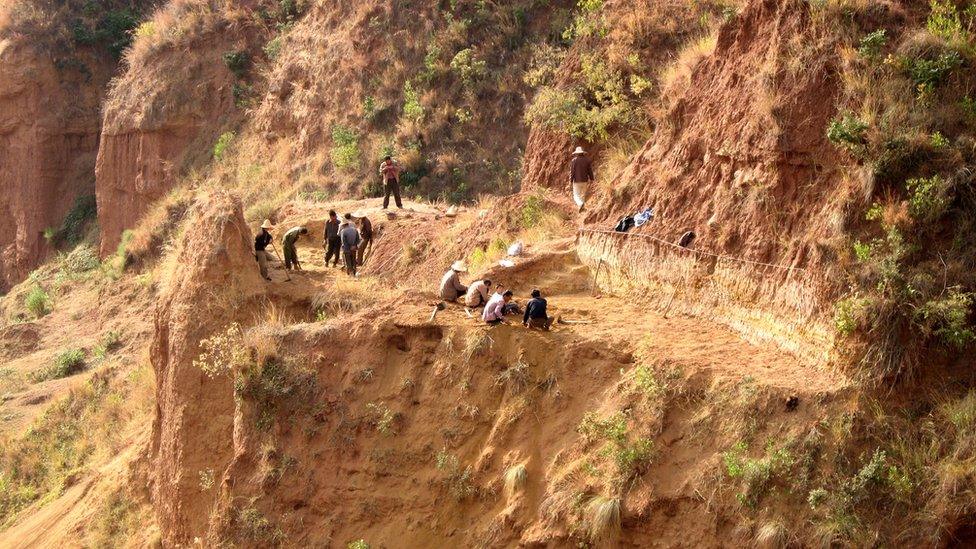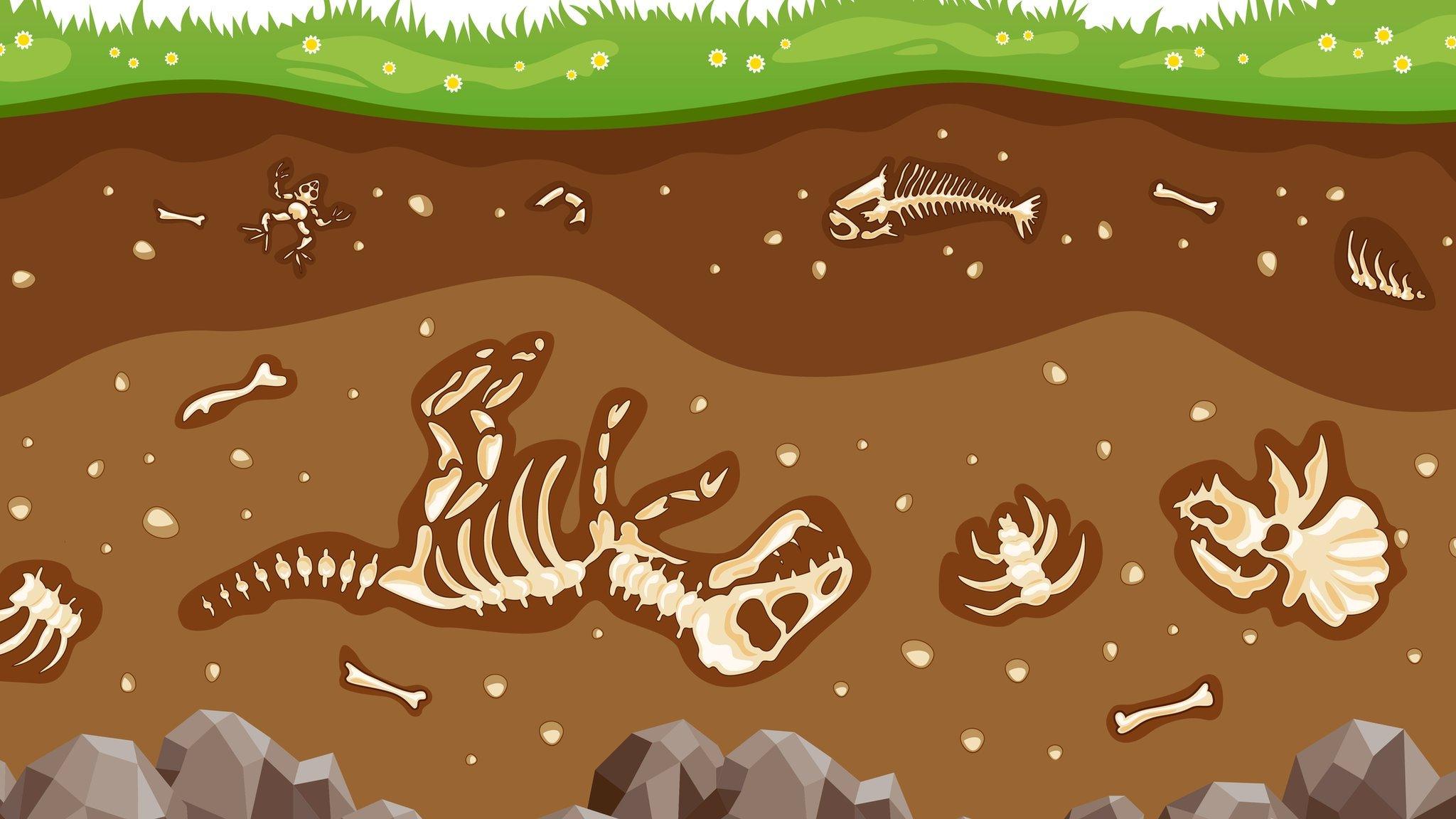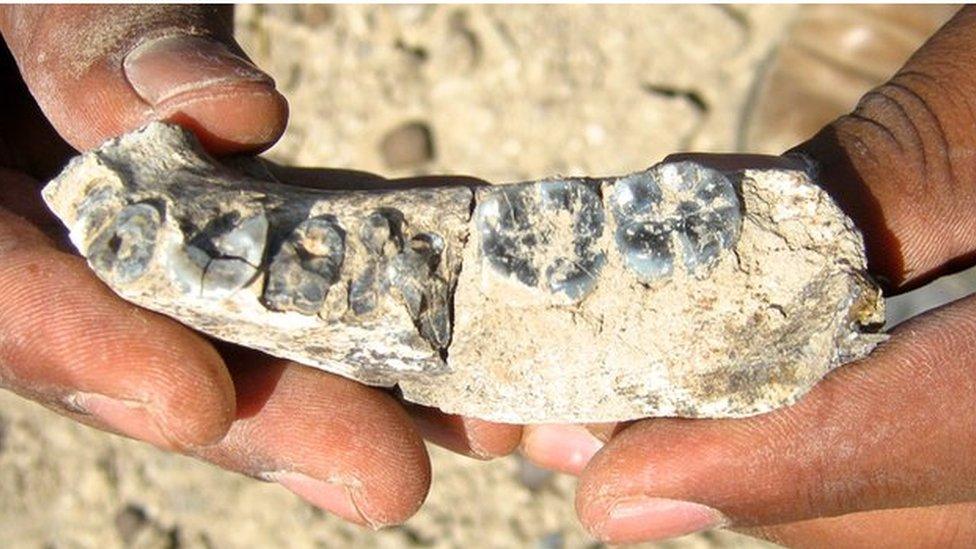Earliest gibbon fossil gives clues about history of apes
- Published
- comments

A team of scientists have discovered what they say is the earliest gibbon fossil ever found.
Experts say it gives more information on the evolutionary history of apes.
The fossil, which comes from part of an upper jaw and seven isolated teeth found near a village in South West China, suggests the earliest known gibbons lived there 7 to 8 million years ago.
The study which is published in the Journal of Human Evolution, centres on hylobatids, a family of apes that includes 20 species of living gibbons that live in tropical forests.
The fossil, found in the Yunnan Province in southwestern China, is of a small ape called Yuanmoupithecus xiaoyuan.
Using the size of the molar teeth as a guide, the scientists estimate that Yuanmoupithecus was similar in size to today's gibbons, with a body weight of about 6 kilograms—or about 13 pounds.
Previous studies suggested that hylobatids diverged from other apes, forming different features making them a new species in Africa between 22 million and 17 million years ago.
But it is not known when gibbon ancestors arrived in Europe and Asia.
"Hylobatids fossil remains are very rare, and most specimens are isolated teeth and fragmentary jaw bones found in cave sites in southern China and southeast Asia dating back no more than 2 million years ago," explains Terry Harrison, a professor of anthropology at New York University and one of the paper's authors.
"This new find extends the fossil record of hylobatids back to 7 to 8 million years ago and, more specifically, enhances our understanding of the evolution of this family of apes."
Evolution is the process which process by which living things can gradually change over time.
The first humans evolved from ape-like ancestors, but scientists say there are still many missing links to how humans and apes evolved.

An excavation in China, one of the locations where Yuanmoupithecus remains have been found
Although this gives more information, the researchers say there is still a big gap in the knowledge of hylobatids.
Using the"Genetic studies indicate that the hylobatids diverged from the lineage leading to the great apes and humans about 17 to 22 million years ago, so there is still a 10-million-year gap in the fossil record that needs to be filled," Harrison says.
"With continued exploration of promising fossil sites in China and elsewhere in Asia, it is hoped that additional discoveries will help fill these critical gaps in the evolutionary history of hylobatids."
- Published6 August 2019

- Published5 March 2015

- Published27 January 2021

